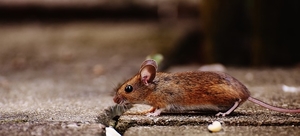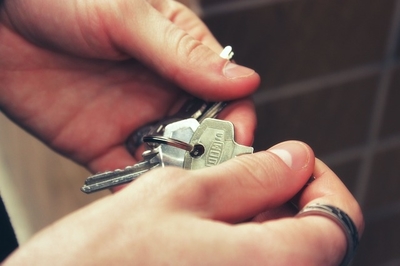When I think about what it takes to learn how to play the piano, three elements come to mind. First, there's the intellectual element. This is the all of the knowledge aspects about music, such as the note letter names or how many notes there are in a key of music etc. With Color Score, we use color and illustrations to convey this information to make it easier to learn and retain.
The second element is the aural or auditory element. This is the discernment of how music sounds. Your ear tells you how a Major chord sounds as opposed to a minor chord or how a color tone changes the sound of a chord.
Thirdly, there's the kinesthetic element. This relates to a person's awareness of the position and movement of the parts of a person's body. In this case it's our hands. It does so by the means of sensory organs (or proprioceptors) in the muscles and joints. This is a more in depth way to explain physical memory. After all, you must physically execute on the piano in order to produce music.
 So what exactly can a mouse teach you about how to learn to play the piano? We must first understand the nature and biology of this little creature. They actually have a system of moving from their habitat to their food source to make their commute easier. But they don't do this visually for three reasons.
So what exactly can a mouse teach you about how to learn to play the piano? We must first understand the nature and biology of this little creature. They actually have a system of moving from their habitat to their food source to make their commute easier. But they don't do this visually for three reasons.
1 They can't see any farther than about 20 feet in front of their face.
2 They're colorblind, so they're unable to see colors that can contrast or distinguish objects from one another.
3 They can't see sharp images.
These three characteristics of a mouse may seem like a handicap that would hinder their survival. But the one thing that makes up for a lack visual prowess is the fact they have an acute kinesthetic sense. For example, they prefer to travel with one whisker touching a wall.
This gives them a feeling of security while they're tracking distance from point A to point B simply with the physical movements of their bodies. Mice also have a more acute sense of smell than humans, which is a physical property as well. They don't know location and distance intellectually, they only how to get there and that they've arrived.
We don't have an acute kinesthetic sense like a mouse. But what we do have is kinesthetic intelligence. This is also known as  kinesthetic ability. We also have the ability to physically recall movements with our bodies and that definitely includes movements on the piano keyboard with our hands. Don't believe me? If you're above the age of four, I'm assuming you can easily tie your shoes.
kinesthetic ability. We also have the ability to physically recall movements with our bodies and that definitely includes movements on the piano keyboard with our hands. Don't believe me? If you're above the age of four, I'm assuming you can easily tie your shoes.
But can you tie your shoes with your eyes closed? Try it! How well did you do? It would be silly for me to assume that you couldn't do it. The real question is: What allows us the ability to tie our shoes without looking at them? For that matter, what allows us the ability to do anything at all without looking?
 In the beginning, not looking doesn't serve us well when we're learning a physical task. A four year old will watch themselves many times until their kinesthetic ability to tie their shoes takes over. It's repetition that allows the kinsesthetic ability to be refined.
In the beginning, not looking doesn't serve us well when we're learning a physical task. A four year old will watch themselves many times until their kinesthetic ability to tie their shoes takes over. It's repetition that allows the kinsesthetic ability to be refined.
How many other physical tasks can you think of in which our kinsesthetic ability serves us? Can you drive a manual transmission (stick shift) car? If yes, you were probably like myself when I learned as a teenager. You at least glanced down every time you shifted gears. But now, it's 100% kinesthetic and you never give it a second thought when you're driving. Unlike a mouse, our kinsesthetic ability to perform tasks are learned but we have it nonetheless.
Also unlike a mouse, we posses fingers. And there's something very interesting about them. Our sense of touch is controlled by a huge network of nerve endings and touch receptors under the skin known as the somatosensory system. This system is responsible for all the sensations we feel whether it's hot, cold, rough, smooth, painful, itchy or virtually any other sensation. In fact, the density of feeling receptors on our finger tips is 2,500 per square centimeter. This is the densest area of receptors in the whole human body.
network of nerve endings and touch receptors under the skin known as the somatosensory system. This system is responsible for all the sensations we feel whether it's hot, cold, rough, smooth, painful, itchy or virtually any other sensation. In fact, the density of feeling receptors on our finger tips is 2,500 per square centimeter. This is the densest area of receptors in the whole human body.
This tells us that if any part of our bodies, are going to physically learn any task, it's going to be our hands first. So how does this help us understand kinesthetic sense as it relates to learning to play the piano? Like I stated earlier, it's repetition that allows our kinsesthetic ability to be refined.
Try this: Play the notes of a D minor 7 chord in your right hand. Simply hold the notes of the chord down until the sound completely decays away...and keep holding down on the notes. Although it doesn't seem as though anything is happening, something in fact is. The feeling receptors in your finger tips is developing the kinsesthetic ability to play this specific chord and in this specific voicing.
Hold the chord down for at least 60 seconds. Repeat this process a couple more times. Now without playing the chord again, try to recall what this chord feels like under your finger tips. This is a type of kinesthetic recall. It's amazing how you can fool your brain into thinking your hands are involved in an activity that's not presently taking place. You'll also find that with more repetition, your kinesthetic ability for chords will become more refined.
We could refer to this as a kinesthetic meditation exercise. This is especially effective when you're trying to learn a new chord or musical passage. So it's not only an effective exercise for playing chords, but also playing a melody, runs, or any finger movement on the keys.
Whatever you may be presently working with, try this kinesthetic exercise. Remember, play the chord or each note (whatever the case may be) and hold. Rinse and repeat as they say. You'll find this to be effective and help you as grow and learn at your piano or keyboard
Until next time, Go Play!
Greg Lee
Latest posts by Greg Lee (see all)
- What is a minor/Major 7 Chord? - October 26, 2023
- 7 Chord Substitutions that Professionals Use - October 19, 2023
- 5 Simple Chord Tricks to Sound Amazing - October 5, 2023



